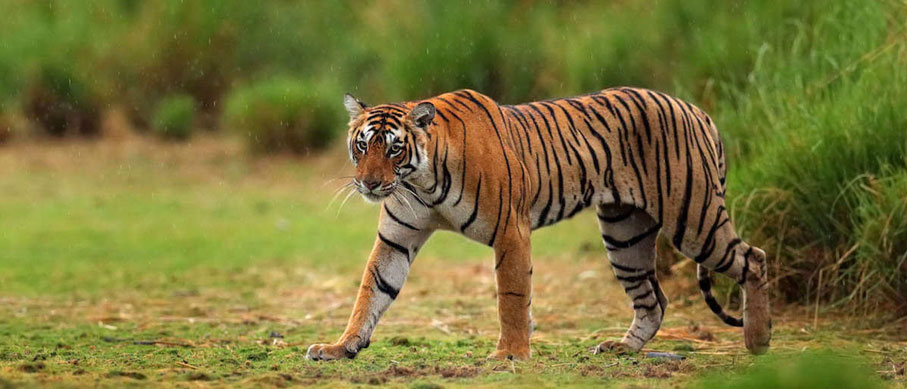Tips and Glimpses of Periyar National Park
By Tushar : [28/Mar/24] Periyar National Park is situated in the Western Ghats, one of the world's biodiversity hotspots, spanning across the districts of Idukki and Pathanamthitta in Kerala. The park covers an area of about 925 square kilometers, encompassing tropical evergreen and moist deciduous forests, grasslands, and a significant portion of the picturesque Periyar Lake.
The history of Periyar National Park is closely tied to the conservation efforts spearheaded by the visionary social reformer, Sri Narayana Guru, and later, by the environmentalist and social activist, Periyar E. V. Ramasamy (after whom the park is named). Ramasamy, also known as Periyar, played a pivotal role in advocating for the preservation of the region's natural resources. Established in 1950, Periyar Wildlife Sanctuary, as it was originally known, was declared a national park in 1982. The park was created to protect the diverse flora and fauna of the region, particularly the population of Asiatic elephants and other endangered species like tigers.

What is Special About Periyar National Park?
Periyar National Park is home to a remarkable array of plant and animal species. The dense forests are teeming with biodiversity, including over 265 species of birds, 35 species of mammals, 45 species of reptiles, and 160 species of butterflies. The flagship species of the park is the majestic Asiatic elephant which roams freely in its natural habitat. While tiger sightings are relatively rare, Periyar is also a tiger reserve providing a vital sanctuary for these endangered big cats. The park's tiger population contributes to the conservation efforts aimed at protecting this iconic species.
One of the unique attractions of Periyar is the boat Safari in Periyar offered on Periyar Lake. These boat rides provide visitors with a tranquil and immersive experience allowing them to observe wildlife including elephants, deer and birds from a different perspective.Periyar National Park is a pioneer in ecotourism initiatives in India. The park emphasizes sustainable tourism practices that prioritize conservation and community engagement. Visitors can participate in various eco-friendly activities like nature walks, bamboo rafting, and tribal village visits.
What is the best time to Visit Periyar National Park?
The best time to visit Periyar National Park largely depends on personal preferences and what activities you ar interested in. However, generally speaking, the ideal time to visit Periyar is during the winter and early spring months, from October to February.
How to book Eco-Tourism Activities in Periyar National Park?
Start by visiting our official website of Periyar Tiger Reserve. They often have a section dedicated to eco-tourism activities where you can find information on available activities, timings and booking procedures. Browse through the list of eco-tourism activities available in Periyar National Park. These may include guided nature walks, bamboo rafting, boat cruises on Periyar Lake, jungle patrol, tribal heritage walks, border hiking, etc. Once you've decided on the activities you want to participate in, check for availability on your preferred dates. Some activities may have limited slots or may be seasonal, so it's essential to plan in advance.
Follow the instructions provided on the website to make reservations. This might involve filling out an online booking form, selecting the desired activity, specifying the number of participants, and providing personal details. Pay for your eco-tourism activities as per the specified payment methods. Online payment options are often available, but some activities may require payment at the park office or designated booking counters. Once you have completed the booking and payment process, you should receive aconfirmation of your reservation via email or SMS. Make sure to keep this confirmation handy as you may need to show it at the park entrance or activity site.
